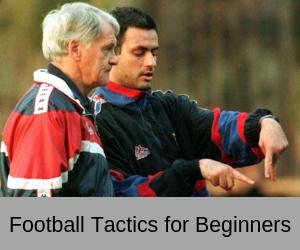What is the low block?
The low block is generally referred to a football team’s defensive shape without the ball. Generally the low block consists of two banks of 4(Sometimes all ten players form the low block), who sit deep in their area to restrict the space available for the team with the ball. Different managers have different interpretations of the low block, especially on how narrow the low block should be. Diego Simeone’s Atletico Madrid favour a narrow block as they are comfortable in leaving space out wide but crowd out the center.
Most inferior teams adopt the low block approach while defending against superior teams. But managers like Jose Mourinho have shown that the low block combined with counter attacking is an effective tactic to deliver trophies. Following United’s 4-0 opening weekend win against Frank Lampard’s Chelsea, Mourinho said,”
“(Chelsea) were not compact defensively, too much space to play, not enough aggression on the ball, the defensive line, the midfield, the attack, they were not compact,” he said.
“(Forward) Tammy Abraham was staying up, (Ross) Barkley was staying up, (Mason) Mount was staying up, Pedro was staying up.
“Nowadays you look to the good teams and all the good teams defend compact. Higher block or lower block, the lower block is more defensive, the higher block more offensive, more aggressive, but always in the block.
“It’s just a basic principle, you have to defend compact, and Chelsea were never that, so it was too easy for Man United,”
Mourinho on this occasion was talking about the concept of “the block” which essentially is a team’s compact defensive structure. A “high block” will not necessarily mean a compact shape as maintaining an effective high block will need aggressive pressing which would break a compact structure.
Read other articles in the series: Football Tactics for Beginners
Read other articles in the series: Football Tactics for Beginners
Whether or not other Premier League coaches and managers listen to Mourinho, United’s opponents in the following games used the low block to stifle United’s attackers. For a one dimensional attacking side like United are under Ole Gunnar Solskjaer with their counter-attacking style, the low block is highly effective in defending against them. As opposition teams try different approaches and keep pushing players forward in a bid to break the low block, the defending team then get plenty of space and time on their counters. Just like Tiki-Taka is an excellent defending tactic, the low block when combined with counter attacks can be an attacking tactic too.
⚫? Jose Mourinho explains the process behind @Inter_en signing Lucio in the summer of 2009 and why the Brazilian defender was instrumental in the club’s treble-winning campaign. pic.twitter.com/AKngGqWIkQ
— The Coaches’ Voice (@CoachesVoice) June 20, 2019
Pressing
For a team looking to win games using the low block, they need an coherent pressing strategy which doesn’t disturb or disrupt their defensive structure. Generally teams utilize the second striker, a central midfielder and a wide midfielder as a pressing unit depending on which areas of the pitch the ball is in. Also, important is to know when and whom to press. Teams can target a specific opposition player or a specific area on the pitch to start pressing.
How to break down the low block
Width probably is the single most important factor in breaking down the low block. As the low block’s primary focus is on staying compact and structured, there is often space on the opposite side of the pitch to where the ball is. Against a defensively strong team with tall center backs, going wide and pumping in crosses into the center isn’t going to work. Occupying the half-spaces, overlapping full backs, cutbacks from wide areas, quick interchanges by creating triangles are all some of the effective attacking moves against the low block.
The single most potent weapon against the low block is the attacking fullback. Fullbacks in the modern game have become an important attacking outlet. It’s not longer enough for a fullback to be a good crosser, he needs to be a good passer, make intelligent runs, combine with midfield players, move into midfield when required, etc. All successful teams currently have fullbacks who are in general better going forward than defending.









